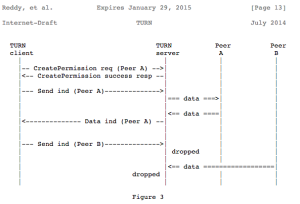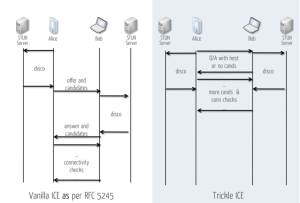One evening last week, I was nerd-sniped by a question Max Ogden asked: That is quite an interesting question. I somewhat dislike using Session Description Protocol (SDP) in the signaling protocol anyway and prefer nice JSON objects for the API and ugly XML blobs on the wire to the ugly SDP blobs used by […]
TURN
coTURN: the open-source multi-tenant TURN/STUN server you were looking for
Last year we interviewed Oleg Moskalenko and presented the rfc5766-turn-server project, which is a free open source and extremely popular implementation of TURN and STURN server. A few months later we even discovered Amazon is using this project to power its Mayday service. Since then, a number of features beyond the original RFC 5766 have been […]
Does Amazon’s Mayday use WebRTC? A Wireshark analysis
Many in the industry, including myself, reference Amazon’s Kindle Fire HDX Mayday button as using WebRTC or at least as something that is WebRTC like. The Kindle Fire HDX is not available everywhere, so if you have not seen this the Android Authority has a good video of this feature here. First lets think about […]
ICE always tastes better when it trickles! (Emil Ivov)
For the last year and a half I’ve been working with a number of customers helping them to understand what WebRTC is about, supporting them in the definition of new products, services, and in some cases even developing WebRTC prototypes/labs for them. I’ve spent time with Service Providers, Enterprise and OTT customers and the very […]
The Open Source rfc5766-turn-server Project – Interview with Oleg Moskalenko
As Reid previously introduced in his An Intro to WebRTC’s NAT/Firewall Problem post, NAT traversal is often one the more mysterious areas of WebRTC for those without a VoIP background. When two endpoints/applications behind NAT wish to exchange media or data with each other, they use “hole punching” techniques in order to discover a direct communication […]





